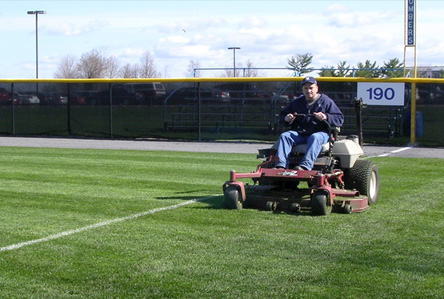
Spring is here, and with that comes baseball across all levels of play. In some parts of the country, the weather feels like summer. In other parts, spring baseball feels more like an extension of winter ball, but not to be confused with winter ball in the Caribbean. The season allows for games to begin nonetheless. Regardless of the number of layers of clothing that may be implemented, baseball is back!
Within the last decade there has been a new wave of technology that has assisted in helping baseball programs. Artificial turf technology has sprouted up all over the country, creating depths of conversation between baseball players, coaches, and fans. Ten years ago it was a rarity, now it is common at all levels. The creation is sweeping athletic complexes, schools, and communities by storm: artificial turf is now recognized as a common playing surface for amateur baseball.
Make no mistake – there are great reasons for why the spread of artificial turf is on the rise. Administrators love the cost that is avoided with the use of artificial turf – expensive up front, but the long term cost of maintaining a natural grass and dirt surface can take a toll on budgets. Schools in the North and Midwest that have artificial surfaces are able to practice outside instead of an indoor facility if snow is melted or removed. Artificial turf provides the potential for fewer cancellations as the field is able to absorb rain storms in a manner that is not possible on a dirt infield. On a natural surface, an April shower can wash the field out and end the day of play.
On the flip side, there are still baseball purists out there that cringe at the sight of artificial turf. When turf makes its way in, many deep rooted joys embedded in the culture of the game make their way out. When baseball purists think of the game of baseball, they think of grass stains and dirt on the uniform, which is actually encouraged in some aspects of the game (diving back on a pickoff attempt, leaving your feet to keep the ball in the infield). They think of sun flower seeds in front of the dugout, which with artificial turf is often discouraged or banned.
Baseball purists think of dragging the infield and long lines of players manning the hose, watering the infield dirt before the game. A baseball purist won’t walk by a field and see the sprinkler system in the outfield creating a crisp green grass surface on artificial turf.
Whatever side a baseball fan lands on when it comes to artificial turf compared to natural grass, it must be acknowledged that change is hard. Baseball fans and players don’t often receive change well. The game has been roughly the same since the late 1800’s. The emergence of artificial turf is surely a change compared to the natural grass surface that the game originated from.
The great thing in this scenario is that there is enough split on the issue to not eliminate one particular surface. This allows for variety. The artificial turf versus natural grass debate will continue to go on, but odds are teams will play on both surfaces many times this spring season. Whether the game is being played on artificial turf or natural grass, spring is here, the game is being played, and that is something worth celebrating!